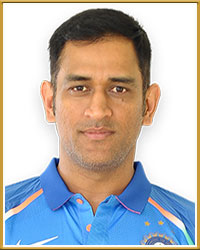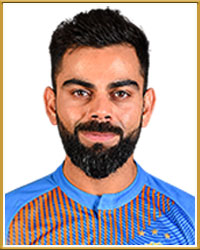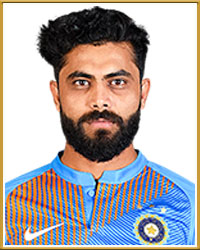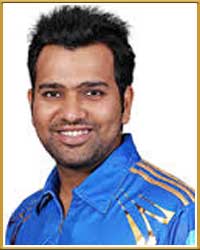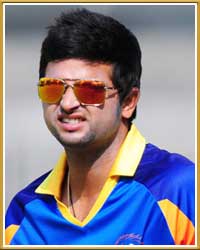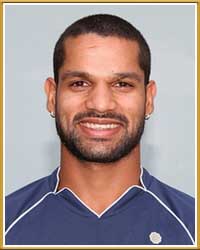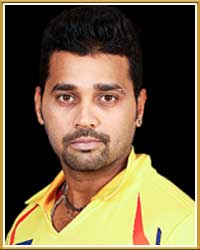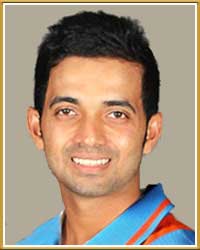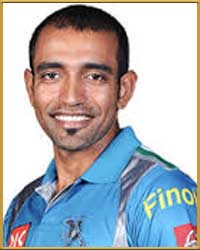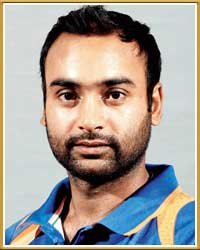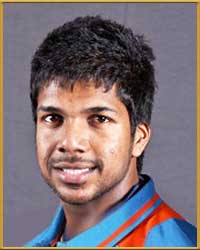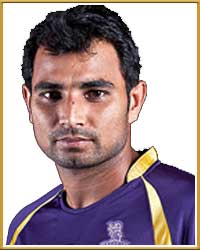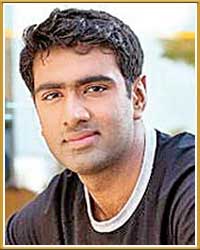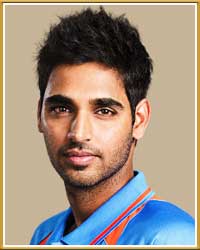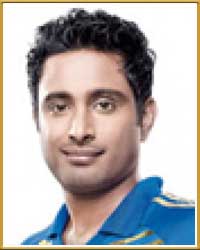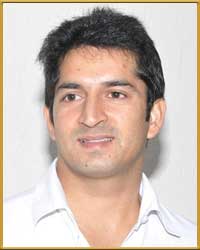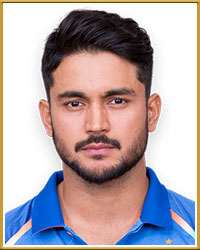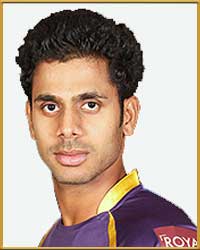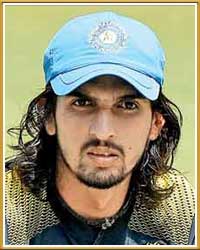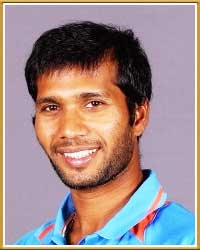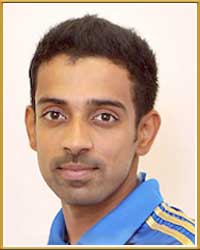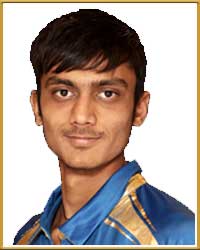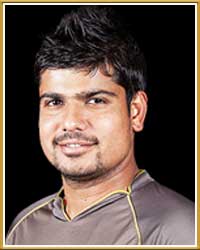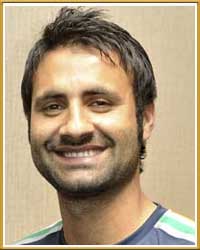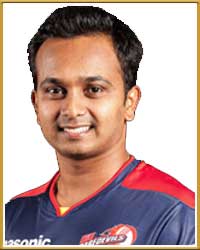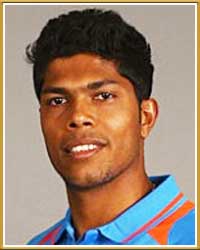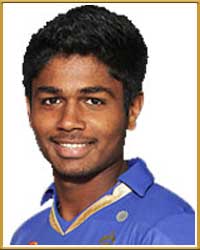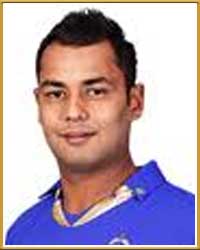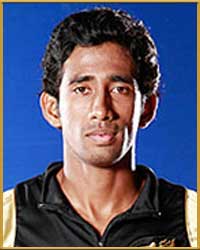Thursday, December 4, 2014
For Book lovers: ICC Cricket World Cup 2015 Schedule:
For Book lovers: ICC Cricket World Cup 2015 Schedule:: ICC Cricket World Cup 2015 Schedule: All Match Fixtures and Complete Time Table of Cricket World Cup 2015 The match fixtures and sche...
ICC Cricket World Cup 2015 Schedule:
ICC Cricket World Cup 2015 Schedule: All Match Fixtures and Complete Time Table of Cricket World Cup 2015
The match fixtures and schedule of the 2015 Cricket World Cup that is to be jointly hosted by Australia and New Zealand has been announced. The 11th ICC Cricket World Cup featuring 49 matches is scheduled to take place from February 14 February to March 29 2015. The once-in-four-year tournament will see Sri Lankan lions take on the one of the host nations New Zealand in the inaugural match of the tournament at Hagley Oval, Christchurch. Australia start their campaign against England in the second match of on the opening day at Melbourne Cricket Ground, Melbourne.
The match fixtures of the Cricket World Cup presents a mouthwatering clash for the 2011 champions India. The opening match of the defending champions India is a dream of every die-hard cricket fans around the globe as 2011 Cricket World Cup India will clash with arch rivals Pakistan on a Sunday, February 15th blockbuster. India had previously defeated Sri Lanka to claim their second World Cup title in 2011 in India, when they hosted the tournament.
The ICC World Cup 2015 that is co-hosted by Australia and New Zealand will see a total matches of 49 played with total number of 14 nations participating. This edition of 2015 World Cup is said to be one of the biggest tournament taking place in the sporting world. The 49 matches will be played in 14 venues with Australia staging 26 games at grounds in Adelaide, Brisbane, Canberra, Hobart, Melbourne, Perth and Sydney while New Zealand hosting 23 games in seven cities, including Auckland, Christchurch, Dunedin, Hamilton, Napier, Nelson and Wellington. The final match of the tournament will take place at the Melbourne Cricket Ground for which they have relaid the stadium turf and developing a new by the finals.
The 14 nations have been divided into two groups – Pool A and Pool B. In the Pool A, the teams are England, Australia, Sri Lanka, Bangladesh, New Zealand, Afghanistan and Scotland while Pool B features South Africa, India, Pakistan, West Indies, Zimbabwe, Ireland and United States of Emirates. The group matches are to be scheduled to be played till March 15.
ICC Cricket World Cup 2015 Schedule: All Match Fixtures and Complete Time Table of Cricket World Cup 2015

BCCI announce 30 India's probable players for Worldcup 2015
Wednesday, December 3, 2014
Sport
Sport (or sports) is all forms of usually competitive physical activity which, through casual or organised participation, aim to use, maintain or improve physical ability and skills while providing entertainment to participants, and in some cases, spectators. Hundreds of sports exist, from those requiring only two participants, through to those with hundreds of simultaneous participants, either in teams or competing as individuals.
Sport is generally recognized as activities which are based in physical athleticism or physical dexterity, with the largest major competitions such as the Olympic Games admitting only sports meeting this definition, and other organisations such as the Council of Europe using definitions precluding activities without a physical element from classification as sports. However, a number of competitive, but non-physical, activities claim recognition as mind sports. The International Olympic Committee (through ARISF) recognises both chess and bridge as bona fide sports, and SportAccord, the international sports federation association, recognises five non-physical sports, although limits the amount of mind games which can be admitted as sports.
Sports are usually governed by a set of rules or customs, which serve to ensure fair competition, and allow consistent adjudication of the winner. Winning can be determined by physical events such as scoring goals or crossing a line first, or by the determination of judges who are scoring elements of the sporting performance, including objective or subjective measures such as technical performance or artistic impression.
In organized sport, records of performance are often kept, and for popular sports, this information may be widely announced or reported in sport news. In addition, sport is a major source of entertainment for non-participants, with spectator sport drawing large crowds to venues, and reaching wider audiences through broadcasting.
According to A.T. Kearney, a consultancy, the global sporting industry is worth up to $620 billion as of 2013.
Meaning and usage
Etymology
"Sport" comes from the Old French desport meaning "leisure", with the oldest definition in English from around 1300 being "anything humans find amusing or entertaining
Other meanings include gambling and events staged for the purpose of gambling; hunting; and games and diversions, including ones that require exercise. Roget's defines the noun sport as an "activity engaged in for relaxation and amusement" with synonyms including diversion and recreation
Nomenclature
The singular term "sport" is used in most English dialects to describe the overall concept (e.g. "children taking part in sport"), with "sports" used to describe multiple activities (e.g. "football and rugby are the most popular sports in England"). American English uses "sports" for both terms.
Competition
There are opposing views on the necessity of competition as a defining element of a sport, with almost all professional sport involving competition, and governing bodies requiring competition as a prerequisite of recognition by the International Olympic Committee(IOC) or SportAccord
Other bodies advocate widening the definition of sport to include all physical activity. For instance, the Council of Europe include all forms of physical exercise, including those completed just for fun.
In order to widen participation, and reduce the impact of losing on less able participants, there has been an introduction of non-competitive physical activity to traditionally competitive events such as school sports days, although moves like this are often controversial
In competitive events, participants are graded or classified based on their "result" and often divided into groups of comparable performance, (e.g. gender, weight and age). For each group, the first in the list will usually be the "winner". The measurement of the result may be objective or subjective, and corrected with "handicaps" or penalties. In a race, for example, the time to complete the course is an objective measurement. In gymnastics or diving the result is decided by a panel of judges, and therefore subjective. There are many shades in between, like boxing or mixed martial arts, where victory is assigned by judges if neither competitor has lost at the end of the match time.
History
The history of sports probably extends as far back as the existence of people as purposive sportive and active beings. Sport has been a useful way for people to increase their mastery of nature and the environment. The history of sport can teach us a great deal about social changes and about the nature ofsport itself. Sport seems to involve basic human skills being developed and exercised for their own sake, in parallel with being exercised for their usefulness. It also shows how society has changed its beliefs and therefore there are changes in the rules. Of course, as we go further back in history the dwindling evidence makes the theories of the origins and purposes of sport difficult to support.
Sport in prehistory
Cave paintings have been found in the Lascaux caves in France that have been suggested to depict sprintingand wrestling in the Upper Paleolithic around 17,300 years ago. Cave paintings in the Bayankhongor Province of Mongolia dating back to Neolithic age of 7000 BC show a wrestling match surrounded by crowds. Neolithic Rock art found at the cave of swimmers in Wadi Sura, near Gilf Kebir in Libya has shown evidence of swimming and archery being practiced around 6000 BC. Prehistoric cave paintings have also been found in Japan depicting a sport similar to sumo wrestling
The Rules of Football
Football refers to a number of sports that involve, to varying degrees, kicking a ball with the foot to score a goal. Unqualified, the word football is understood to refer to whichever form of football is the most popular in the regional context in which the word appears: association football (also known as soccer) in the vast majority of the world; gridiron football (specifically American football or Canadian football) in the United States and Canada; Australian rules football in Australia; Gaelic football in Ireland; and rugby football (specifically rugby union) in New Zealand. These different variations of football are known as football codes.
Various forms of football can be identified in history, often as popular peasant games. Contemporary codes of football can be traced back to the codification of these games at English public schools in the eighteenth and nineteenth centuries The influence and power of the British Empire allowed these rules of football to spread to areas of British influence outside of the directly controlled Empire, though by the end of the nineteenth century, distinct regional codes were already developing: Gaelic Football, for example, deliberately incorporated the rules of local traditional football games in order to maintain their heritage. In 1888, The Football League was founded in England, becoming the first of many professional football competitions. During the twentieth century, several of the various kinds of football grew to become among the most popular team sports in the world.
Common elements
The various codes of football share certain common elements. Players in American football, Canadian football, rugby union and rugby league take-up positions in a limited area of the field at the start of the game. They tend to use throwing and running as the main ways of moving the ball, and only kick on certain limited occasions. Body tackling is a major skill, and games typically involve short passages of play of 5–90 seconds. Association football, Australian rules football and Gaelic football tend to use kicking to move the ball around the pitch, with handling more limited. Body tackles are less central to the game, and players are freer to move around the field (offside laws are typically less strict). Common rules among the sports include.Two teams of usually between 11 and 18 players; some variations that have fewer players (five or more per team) are also popular.
· A clearly defined area in which to play the game.
· Scoring goals or points, by moving the ball to an opposing team's end of the field and either into a goal area, or over a line.
· Goals or points resulting from players putting the ball between two goalposts.
· The goal or line being defended by the opposing team.
· Players being required to move the ball—depending on the code—by kicking, carrying, or hand-passing the ball.
· Players using only their body to move the ball.
In all codes, common skills include passing, tackling, evasion of tackles, catching and kicking.[8] In most codes, there are rules restricting the movement of players offside, and players scoring a goal must put the ball either under or over a crossbar between the goalpost
The Rules of Football
The rules of football are officially referred to as the "Laws of the Game". The Laws of the Game are described very precisely (approximately 150 pages) on the FIFA website here.
There are 17 laws in total, each one briefly summarised below.
Field of Play. The game can be played on either natural or artificial surfaces, the surface must be green and rectangular in shape. The two long sides of the rectangle are called touch lines and the two shorter sides are called goal lines. The field is divided in half by the halfway line.
Ball. Must be spherical, made of leather (or similar) 68-70 cm in circumference and of a certain pressure.
Number of Players. Two teams of no more than 11 players (one of which is the goalkeeper). A game cannot start if either team has less than 7 players.
Equipment. Players must wear a jersey, shorts, stockings, shinguards and footwear.
Referee. The referee ensures the Laws of the Game are respected and upheld.
Assistant Referees. There may be at most 2 assistant referees.
Duration of the Match. The game is played in 2 halves consisting of 45 minutes each. The half time interval must not exceed more than 15 minutes. At the discretion of the referee more time is allowed to compensate for any stoppage during play e.g. Due to substitutions or care and attention of injured players.
Start and Restart of Play. A kick-off starts play at the start of the match or after a goal. A kick-off involves one player kicking the ball, from stationary, forward from the centre spot. All players must be in their own half prior to kick-off. A coin is tossed pre-game, the team which loses the toss are awarded the kick-off to start the game whilst the team that win the toss are allowed to choose which direction they want to play. After half time the teams switch direction and the other team will kick-off. After a goal is scored, the team which conceded the goal will kick-off to restart play.
Ball in and Out of Play. The ball is out of play once a goal has been scored or when the referee has stopped the game. The ball is in play at all other times.
Method of Scoring. The ball crosses the goal line inside the goal mouth.
Offside. It is an offence for a player to be in contact with the ball when they are closer to the opponents' goal than both the ball and the second-last opponent. The offside rule exists to ensure there are always opponents (generally the goal keeper and a defender) between a player receiving the ball and the goal. Without the offside rule, play can become boring with repeated long balls being kicked to a player stood next to the goalkeeper for an easy goal.
Fouls/Misconduct. These are many and varied, broadly speaking it is an offence to use excessive force whilst playing the game either deliberately or undeliberately or to handle the ball (unless you are a goal keeper). The referee may show the yellow card to caution players for less serious offences and the red card for more serious offences resulting in the player being sent off. Two yellow cards are equivalent to one red card.
Free Kicks. Are given by the referee for fouls and misconduct. A free kick can either be direct or indirect. A goal can be scored directly from a direct free kick. A goal can only be scored from an indirect free kick if it touches at least one other player first. The free kick must be taken from a stationary position with that position varying depending on whether the free kick was given inside or outside the goal area and whether it's direct or indirect. The opposing team must be a minimum of 9.15 m from the ball when the free kick is taken.
There are 17 laws in total, each one briefly summarised below.
Field of Play. The game can be played on either natural or artificial surfaces, the surface must be green and rectangular in shape. The two long sides of the rectangle are called touch lines and the two shorter sides are called goal lines. The field is divided in half by the halfway line.
Ball. Must be spherical, made of leather (or similar) 68-70 cm in circumference and of a certain pressure.
Number of Players. Two teams of no more than 11 players (one of which is the goalkeeper). A game cannot start if either team has less than 7 players.
Equipment. Players must wear a jersey, shorts, stockings, shinguards and footwear.
Referee. The referee ensures the Laws of the Game are respected and upheld.
Assistant Referees. There may be at most 2 assistant referees.
Duration of the Match. The game is played in 2 halves consisting of 45 minutes each. The half time interval must not exceed more than 15 minutes. At the discretion of the referee more time is allowed to compensate for any stoppage during play e.g. Due to substitutions or care and attention of injured players.
Start and Restart of Play. A kick-off starts play at the start of the match or after a goal. A kick-off involves one player kicking the ball, from stationary, forward from the centre spot. All players must be in their own half prior to kick-off. A coin is tossed pre-game, the team which loses the toss are awarded the kick-off to start the game whilst the team that win the toss are allowed to choose which direction they want to play. After half time the teams switch direction and the other team will kick-off. After a goal is scored, the team which conceded the goal will kick-off to restart play.
Ball in and Out of Play. The ball is out of play once a goal has been scored or when the referee has stopped the game. The ball is in play at all other times.
Method of Scoring. The ball crosses the goal line inside the goal mouth.
Offside. It is an offence for a player to be in contact with the ball when they are closer to the opponents' goal than both the ball and the second-last opponent. The offside rule exists to ensure there are always opponents (generally the goal keeper and a defender) between a player receiving the ball and the goal. Without the offside rule, play can become boring with repeated long balls being kicked to a player stood next to the goalkeeper for an easy goal.
Fouls/Misconduct. These are many and varied, broadly speaking it is an offence to use excessive force whilst playing the game either deliberately or undeliberately or to handle the ball (unless you are a goal keeper). The referee may show the yellow card to caution players for less serious offences and the red card for more serious offences resulting in the player being sent off. Two yellow cards are equivalent to one red card.
Free Kicks. Are given by the referee for fouls and misconduct. A free kick can either be direct or indirect. A goal can be scored directly from a direct free kick. A goal can only be scored from an indirect free kick if it touches at least one other player first. The free kick must be taken from a stationary position with that position varying depending on whether the free kick was given inside or outside the goal area and whether it's direct or indirect. The opposing team must be a minimum of 9.15 m from the ball when the free kick is taken.
Penalty Kicks. Are given against a team when they commit an offence which would normally be awarded a direct free kick inside their goal area. The ball is kicked from stationary from the penalty spot. The opposing team must be outside of the penalty area and at least 9.15 m from the ball.
Throw-in. Used to restart play after the whole of the ball has crossed the touch line.
Goal kick. Used to restart play after a goal has been scored.
Corner Kick. Is given when the whole of the ball crosses the goal line and was last touched by a member of the defending team (and no goal was scored). A corner kick is taken from inside the corner arc closest to the point where the ball crosses the goal line. The defending team must be at least 9.15 m from the ball when the corner kick is taken
Goal kick. Used to restart play after a goal has been scored.
Corner Kick. Is given when the whole of the ball crosses the goal line and was last touched by a member of the defending team (and no goal was scored). A corner kick is taken from inside the corner arc closest to the point where the ball crosses the goal line. The defending team must be at least 9.15 m from the ball when the corner kick is taken
The rules of football are officially referred to as the "Laws of the Game". The Laws of the Game are described very precisely (approximately 150 pages) on the FIFA website Here
Donald Bradman
Sir Donald Bradman
Australia • 92 years old
Brilliance is a factor that falls out of the realm of measurement. The measurement of zenith is incomprehensible. However, when it comes to cricket, there is an individual who has set the benchmark of measuring brilliance. Sir Donald George Bradman was without a shadow of doubt, one of the greatest cricketers to have walked the planet. His batting redefined the sports and his brilliance confounded opponents.
How can one describe Bradman’s brilliance? Can his staggering statistical achievements be chronicled in a nutshell? If there is one number that symbolized Bradman’s cricketing career, it is 99.94, his average in Test cricket. Few would have ever imagined that the lad from Bowral would turn out to be a colossus in this sport considering his poor debut in the Test against England at Brisbane in 1928. It was a poor match for both Bradman and Australia as he contributed just 19 runs and Australia suffered a massive 675 run loss. After a poor start, Bradman ended the series on a high with 468 runs at an average close to 67. It also included two centuries and a glimpse was given of Bradman’s genius
If one has to describe Bradman’s dominance, it would be the 1930 series against England when he amassed a staggering 974 runs at an average of 139.14. His knocks of 254 at Lords, 334 at Leeds and 232 at The Oval were a sight for sore eyes. His 334, in particular, featured plenty of statistics. He had become the second player after Wally Hammond to score two consecutive scores of 200. He had scored a 100 before lunch and finished the day on 309. Such feats remain unequalled even in today’s fast-paced cricket.
Bradman haunted England and he left England crippled after the end of the series. To thwart his run-scoring, England skipper Douglas Jardine invented Bodyline, the tactic that was damned due to the hostile use of the short pitched ball aimed at causing injury. This reaped success for England as they won the Ashes in 1933 but Bradman still averaged 56. Not only was Don Bradman a dazzling batsman, he was also a brilliant skipper and this was illustrated in the 1936/37 series. England headed to Melbourne with a 2-0 score-line and few expected Australia to fight back.
What followed next was simply remarkable. On a pitch sodden by heavy rain for a week, Australia crawled to 200 and England folded up for 76. Bradman, in a bold move, decided to reverse the batting order. The move reaped rich rewards and Bradman was involved in a 346 run stand for the sixth wicket with Jack Fingleton as Australia amassed 564 to win the match by 365 runs. England were demoralized that they lost the next two matches to lose the series 3-2. This remains the only instance in Test history where Australia have bounced back from been 2-0 down to winning the next three matches of the series.
The Second World War ate up into Bradman’s playing career and when cricket resumed in 1946, he was in poor health. The 1948 tour to England was his last and he led a team of such remarkable talent that they were nicknamed “The Invincibles”. Coming out to bat for the last time at the Oval, Bradman needed just four runs to reach the magical average of 100 but he was dismissed by Eric Hollies for a duck. Such was the shock among all cricketing analysts and the public that they remarked this moment as “God’s Blob”.
Despite all his genius, Bradman did have some weaknesses. Left arm orthodox spin troubled him the most and also leg spin. Hedley Verity, one of the great left-arm orthodox spinners of that time, dismissed him eight times, the most ever by any bowler. After retirement, he was an astute administrator in the Australian Cricket Board who is well known for his pragmatic handling of World Series cricket. He was a man who kept away from the spotlight and was a private person. He died of Pneumonia on February 25th, 2001. For all his achievements in the cricketing world, Sir Don Bradman is without a shadow of doubt, one of the greatest mortals to have played the game in the 20th century.
FUN FACTS:
On his 90th birthday, Bradman hosted a meeting with two of his favourite modern cricketers, Sachin Tendulkar and Shane Warne. He remarked in an interview,
When he started off playing cricket, he invented his own solo game. He used a cricket stump as a bar and a golf ball. A water tank, mounted on a curved brick stand was present in the back of his house. When he hit the curved brick facing of the stand, the ball would rebound at varying angles at high speed, thus developing his timing and concentration
Bradman left school in 1922 and worked with a local real estate agent. He played Tennis for a period of two years before dropping it for cricket.
Bradman’s record of 974 runs in a series is the most by any player in Test history and it has been unequalled till today.
Bradman had his appendix removed during the 1934 tour and he lost a lot of blood. He was fighting for his life but he managed to survive.
During the period of World War two, Bradman suffered from a muscle condition known as Fibrositis and he also had poor eyesight. He was invalidated from the Army in 1941.
How can one describe Bradman’s brilliance? Can his staggering statistical achievements be chronicled in a nutshell? If there is one number that symbolized Bradman’s cricketing career, it is 99.94, his average in Test cricket. Few would have ever imagined that the lad from Bowral would turn out to be a colossus in this sport considering his poor debut in the Test against England at Brisbane in 1928. It was a poor match for both Bradman and Australia as he contributed just 19 runs and Australia suffered a massive 675 run loss. After a poor start, Bradman ended the series on a high with 468 runs at an average close to 67. It also included two centuries and a glimpse was given of Bradman’s genius
If one has to describe Bradman’s dominance, it would be the 1930 series against England when he amassed a staggering 974 runs at an average of 139.14. His knocks of 254 at Lords, 334 at Leeds and 232 at The Oval were a sight for sore eyes. His 334, in particular, featured plenty of statistics. He had become the second player after Wally Hammond to score two consecutive scores of 200. He had scored a 100 before lunch and finished the day on 309. Such feats remain unequalled even in today’s fast-paced cricket.
Bradman haunted England and he left England crippled after the end of the series. To thwart his run-scoring, England skipper Douglas Jardine invented Bodyline, the tactic that was damned due to the hostile use of the short pitched ball aimed at causing injury. This reaped success for England as they won the Ashes in 1933 but Bradman still averaged 56. Not only was Don Bradman a dazzling batsman, he was also a brilliant skipper and this was illustrated in the 1936/37 series. England headed to Melbourne with a 2-0 score-line and few expected Australia to fight back.
What followed next was simply remarkable. On a pitch sodden by heavy rain for a week, Australia crawled to 200 and England folded up for 76. Bradman, in a bold move, decided to reverse the batting order. The move reaped rich rewards and Bradman was involved in a 346 run stand for the sixth wicket with Jack Fingleton as Australia amassed 564 to win the match by 365 runs. England were demoralized that they lost the next two matches to lose the series 3-2. This remains the only instance in Test history where Australia have bounced back from been 2-0 down to winning the next three matches of the series.
The Second World War ate up into Bradman’s playing career and when cricket resumed in 1946, he was in poor health. The 1948 tour to England was his last and he led a team of such remarkable talent that they were nicknamed “The Invincibles”. Coming out to bat for the last time at the Oval, Bradman needed just four runs to reach the magical average of 100 but he was dismissed by Eric Hollies for a duck. Such was the shock among all cricketing analysts and the public that they remarked this moment as “God’s Blob”.
Despite all his genius, Bradman did have some weaknesses. Left arm orthodox spin troubled him the most and also leg spin. Hedley Verity, one of the great left-arm orthodox spinners of that time, dismissed him eight times, the most ever by any bowler. After retirement, he was an astute administrator in the Australian Cricket Board who is well known for his pragmatic handling of World Series cricket. He was a man who kept away from the spotlight and was a private person. He died of Pneumonia on February 25th, 2001. For all his achievements in the cricketing world, Sir Don Bradman is without a shadow of doubt, one of the greatest mortals to have played the game in the 20th century.
FUN FACTS:
On his 90th birthday, Bradman hosted a meeting with two of his favourite modern cricketers, Sachin Tendulkar and Shane Warne. He remarked in an interview,
When he started off playing cricket, he invented his own solo game. He used a cricket stump as a bar and a golf ball. A water tank, mounted on a curved brick stand was present in the back of his house. When he hit the curved brick facing of the stand, the ball would rebound at varying angles at high speed, thus developing his timing and concentration
Bradman left school in 1922 and worked with a local real estate agent. He played Tennis for a period of two years before dropping it for cricket.
Bradman’s record of 974 runs in a series is the most by any player in Test history and it has been unequalled till today.
Bradman had his appendix removed during the 1934 tour and he lost a lot of blood. He was fighting for his life but he managed to survive.
During the period of World War two, Bradman suffered from a muscle condition known as Fibrositis and he also had poor eyesight. He was invalidated from the Army in 1941.
Batting stats
| M | Inn | Runs | HS | Avg | SR | NO | 100 | 50 | 4s | 6s |
| Tests | 52 | 80 | 6996 | 334 | 99.94 | 71.4 | 10 | 29 | 13 | 681 | 6 |
Bowling stats
| M | Inn | B | Runs | Wkts | BBI | BBM | Econ | Avg | SR | 5W | 10W |
| Tests | 52 | 9 | 158 | 72 | 2 | 8 / 1 | 15 / 1 | 2.77 | 36 | 79 | 0 | 0 |
Subscribe to:
Comments (Atom)
